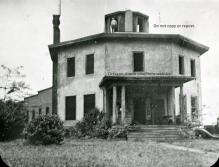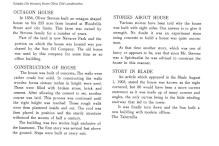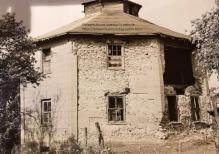Left click on the images below for larger versions.

|
Source: Ellen Puerzer.
Entered: March, 2014.
Left click on the images below for larger versions.

|
Left click on the images below for larger versions.

|

|

|

|

|
Left click on the images below for larger versions.

|

|

|

|

|

|

|

|

|

|

|

|

|

1930 |
Left click on the image below for a larger version.
Left click on the images below for larger versions.

|

|

|

|

|

|

|

|

|

|

|

|

|

|

|

|

|

|

|

|

|

|
Left click on the images below for larger versions.

2003 |

2019 |

|
Left click on the image below for a larger version.
Left click on the images below for larger versions.

|

|

2012 satellite view. |

November 4, 1947 |

June 27, 2000 |

c1950 |
Left click on the images below for larger versions.

|

|

|

|

|

2012 satellite view. |

|

2012 |

December 31, 1980 |
Left click on the images below for larger versions.

|

Clark Lane, in an 1852 daguerreotype.
Left click on the images below for larger versions.

|

|

|

|

Nov 19, 1973 |

June 2, 1974 |

1887 |

1899 |
Left click on the images below for larger versions.

|

|

|

1882 |

|
Left click on the images below for larger versions.

|

|

|

|
Left click on the images below for larger versions.

|

|

|

|
Left click on the images below for larger versions.

|

|

|
Left click on the images below for larger versions.

1911 |

c1945 |

1913 |

2013 |

|

|

|
The East Liverpool Historical Society provides the following:
"Fredericktown OH. built 1858.
When the log school proved unsuitable the town decided to erect an octagonal school (which were the rage at this time.) Mr David Culbertson, a local sawmill owner undercut all other bids and erected it for $400. A privy and coal house were also erected on the grounds. I. W. Young was the first schoolteacher. It served as a school until 1878. A coal-burning stove provided heat with a chimney riding through the center lantern and belfry. Each of 7 sides had a fifteen-pane window.
It was purchased by William McKee who moved the building to his St Clair Hotel on Main st.. A wooden verandah was attached and he opened it as an emporitum. He sold dry goods, shoes boots . He sold it in 1888 to James Longnecker and it again served as a general store. It was given a tin sheet roof and was known as the round house. The Fredericktownpost office operated in that building until 1918 which was around the time the general store closed as well. It was then abandoned. In 1967 the historical significance of the building was realized and it was moved to its present location. The building was renovated and the original wood roof restored and it now serves as a museum in the village."
Left click on the images below for larger versions.

|

|

|

July 20, 1984 |

July 30, 1985 |
Left click on the images below for larger versions.

|

|

|

|

|

|
Left click on the images below for larger versions.

|

|
George A. Boeckling, in an undated photograph. B. 1862, D. 1931.
Stu Hoffman, who lived in the house from about 1958 to 1965, and
Tenley C. Draheim, who visited the house often, supply the information and
photographs below.
Left click on the images below for larger versions.

|

|

|

|

|

|

|

Owned house from 1958 to 1973. |

|

|

Photo showing the house was stuccoed. |

|

|
Some interior views below, in undated photographs.
Left click on the images below for larger versions.

|

|

Door by bed - access to widow's walk. |

|

|

Living room - dinning room to the left, through doors. |

Cuckoo's Nest - over kitchen. |

Living room - Alma Hoffman. |

Eagle's nest. |
Left click on the images below for larger versions.

|

|
Left click on the images below for larger versions.

|

|
A 1929 aerial photograph. The Breakers hotel appears in the bottom right.
Left click on the images below for larger versions.

|

|
A late 1960s aerial photograph.
Left click on the images below for larger versions.

|

|

2012 |

2012 |

1989 |

|

|

As built |
Left click on the images below for larger versions.

1947 |

|

|

|

February 19, 1937 |
Left click on the images below for larger versions.

|

|

|

|

|

|

May 12, 1982 |

1924 |

1924 |

|

|

|

|

|
Left click on the images below for larger versions.

|

|

|

|

|

1964 |
Left click on the image below for a larger version.
Left click on the images below for larger versions.

|

|
Left click on the images below for larger versions.

|

|

|

|

August 17, 1962 |

January 1, 1971 |
Left click on the image below for a larger version.
The photo above is circa 1940.
Left click on the images below for larger versions.

|

|

1891 |
Left click on the images below for larger versions.

|

|
Left click on the images below for larger versions.

c1975 |

|

c1975 |

|

|

1873 |

1911 |
Left click on the images below for larger versions.

|

March 7, 1884 |
Left click on the images below for larger versions.

|

|

|

|

|

|

|

|

|
Left click on the images below for larger versions.

|

|

|

|

|

|

|

|

|
Left click on the images below for larger versions.

|

|

|

|

|

|

|

|

|

|

1874 |

1868 |

1884 |
Left click on the images below for larger versions.

|

|

|
Left click on the images below for larger versions.

|

1929 |

1947 |
Left click on the images below for larger versions.
Left click on the images below for larger versions.

|

|

|

|

|
Left click on the images below for larger versions.

|

|

|

1898 & 1905 & 1931 |

2007 |

|

|

|

|

|

|

|

|

|

|

|

|
Left click on the images below for larger versions.

|

|

|

|

|

|

|

|

|
Left click on the image below for a larger version.
Left click on the images below for larger versions.

|
Left click on the images below for larger versions.

|

|

|

|

|

|

|

|

2013 - before renovation started. |

2013 - before renovation started. |

2013 - renovation starting. |

|

|

1875 |

1950 |

David C. Fowler - builder. |

2016 |

2016 |

1920 |
Left click on the images below for larger versions.

1974 |

1880 |

1880 |

c1970 |

|

1996 |

c2002 |

October 18, 1960 |
|
Page 1 |
Page 2 |
Page 3 |
Page 4 |
Page 5 |
Page 6 |
Left click on the images below for larger versions.

|

|
Public offered rare glimpse inside Octagon House
BY NICK POWELL, STAFF REPORTER
CIRCLEVILLE - A house that has dotted the Pickaway County landscape since before the Civil War will be open for limited tours this weekend as a benefit for the Roundtown Conservancy.
Between 1 and 5 p.m. Saturday, the house's first-floor layout will be available for the public to see at a cost of $5 per person.
Proceeds will be used to offset the conservancy's expenses for moving the brick structure from its original site and insurance.
The Gregg-Crites Octagon House, which the conservancy has owned for the last 10 years, hasn’t been inhabited since 2000.
When WalMart planned to build its current Circleville store on South Court Street, it had intentions of razing the octagonal house to make room on the site, according to Dorothy Cooper, conservancy president.
Between fundraisers and an emergency loan of $65,000 from the National Trust for Historic Preservation, the conservancy hired a Zanesville company to move the building to a field on the north side of Crites Road, she added.
The building's interior was in fairly good condition after the move, but, over the years, vandals smashed windows and put gaping holes into walls. Even some spindles on the spiral staircase have been kicked out.
"Fortunately, the vandalism has been cosmetic," Cooper noted. "The structural integrity is good."
The conservancy hopes to restore the interior to the way it might have looked more than 160 years ago.
As paint chips off the walls, students from the Columbus College of Art & Design have come in to examine the original stencil designs in hopes or reproducing the pattern for future application, Cooper said.
"Cincinnati College of Architecture has sent some of its students to study the house's structure and plans to create a scale rendering," she added.
The first floor, which the public will be allowed to walk through, features a family room, parlor, dining room and kitchen.
The 26-step spiral staircase can be viewed by visitors, however it and the second floor bedrooms will not be accessible, according to Thomas Cooper, conservancy treasurer.
"We don't want someone to get hurt if they lose their footing on the steps or upstairs floors," he noted.
The house was built in 1855 by George Gregg, a wealthy farmer.
"It is presumed that Gregg was inspired by the octagonal courthouse in Circleville when he designed this house," Thomas Cooper stated.
The house later served as the home of Alonzo Wentworth before the M.E. Crites bought it.
"The Crites family probably owned it longer than any other family," said Dorothy Cooper.
Triangular closets "square off" the outside half of most rooms, and the downstairs closets were built with a semi-circular topped window to provide a distinctive look to the house's exterior.
The second floor consists of eight bedrooms, but only four have doorways that open out to the interior balcony that overlooks the spiral staircase.
The other four rooms have fireplaces, instead of doors, on the stairwell walls so they can be accessed from the other rooms. That design is considered by some people as an early version of a suites layout.
The conservancy meets at 7 p.m. on the third Tuesday of each month in the Crites-Hannan Room of the Pickaway County District Public Library on N. Court Street.
Left click on the images below for larger versions.

|

|

1922 & 1938 |

1922 |
Left click on the images below for larger versions.

|

April 6, 1985 |

|

1970 |
Left click on the images below for larger versions.

|

2013 |

2013 |

|
Left click on the images below for larger versions.

|

|

|

|

|
Left click on the images below for larger versions.

|

Front view. |

Rear view. |

Part 1 |

Part 2 |

Part 3 |

Jeremiah Good |

|

Circa 1940 |

1887 |

1887 |

|
Left click on the images below for larger versions.

1870 |

1894 |

1867 |

1874 |

1882 |
Left click on the image below for a larger version.
Left click on the images below for larger versions.

|

|

|

|

|
Left click on the images below for larger versions.

|

|

|

|

|
Left click on the images below for larger versions.

|

|

|
|

|

|

|
|

|

|

|
|

The house in the 1970's before Mrs. Logan-Brown restored it. |

|

|

1950's |

|

1950's |

February 18, 2005 |
Left click on the images below for larger versions.

|

c1923 |

c1915 |

c1923 |

|

|

|

1923 |
Left click on the images below for larger versions.

|

|

|

|

|

|

1916 |
Left click on the images below for larger versions.

Front view. |

Front right view. |

Left view. |

Rear view. |

2013 |
Left click on the images below for larger versions.

|

|

|

|

1875 |

2012 |

1875 |
May 12, 2009
Home among Lebanon's most historical
By Justin McClelland Justin McClelland, Staff Writer
Christy and Greg McDonel's home contains many of the classic traits of Lebanon's grand historic homes, including tall ceilings, spacious rooms, and a magnificent wooden staircase.
But there is something decidedly different about the McDonel's house on Cincinnati Avenue. Open any closet in the home and like a bizarre optical illusion coming to life, the walls all slope inward, like pieces of a pie.
"They are absolutely useless," Christy laughed.
The McDonels live in the Hexagon House, a unique home with six sides. Built in 1858, its design is unique in any age, but for the McDonels, its quirkiness is part of its charm.
Most of the rooms in the three-story brick house are square, despite the unusual shape. Christy said the home has about 4,000 square feet of livable space. The first floor has five rooms including a modern kitchen and a spacious dining room. Christy said trying to decorate such large spaces can be difficult.
"One of the biggest challenges is to take a large space and make them cozy," Christy said.
A newspaper from the 1960s said the home had 13 rooms and 13 closets, each numbered, although some closets were eliminated during renovations.
The walls are about 12 inches thick, which helps to keep the house warm, although Christy said her family keeps lots of sweaters handy in the winter.
The McDonels appreciate the home's history, but they still aspire to make it a livable piece of history for themselves and their three children Duncan, 12; Maggie, 10, and Liam, 2 and not just a museum piece.
"We're very ordinary people in an extraordinary home," Christy said. "People stop by a lot to take pictures or inspect it. It's very flattering."
Strange history of strange house
The history of Lebanon's Hexagon house is filled with the sorts of eccentrics and quirks appropriate for a house built with six sides.
The home, which is owned by Christy and Greg McDonel and their three children, was built in 1858 by Goldsmith Coffeen.
Coffeen was a doctor of sorts, who sold a liniment or lotion of dubious nature advertised to be "good for man or beast alike," according to records from the Warren County Historical Society. Empty bottles of Coffeen's liniment can be seen in the historic society's Glendower museum.
Coffeen brewed his special liniment on the property grounds, both in his basement and a nearby laboratory, that is also still standing, used today as a separate home. The McDonels have found several small empty bottles buried in their backyard and in the house's basement.
At some point he added a back room to the house, which the McDonels now use as their kitchen.
Coffeen was also a horse breeder who raised Shanghai Mary "the mother of the trotting horse world," according to the Ohio Preservation Office.
Why Coffeen decided to erect a hexagon house has never been adequately answered. The Ohio Historic Preservation Office's records on the house said an octagon (eight-sided) shape was popular in New York, Coffeen's native home, in the early 1800s. Very few six-sided homes or buildings of any sort are found anywhere in the world.
Coffeen also claimed that his heart was on the right side of his chest. Although often doubted during his life, news articles after his death said an autopsy was performed and proved Coffeen's claim to be correct.
In 1910, the home was purchased by Clifford and Grace Warrick. Warren County historian John Zimkus said that after her husband's death, Grace became very private and refused to let investigators into her home, giving it an air of mystery that added to the home's legend.
The McDonels moved into the house in 2004. Originally from Kings, they had loved the historic Floraville neighborhood of Lebanon and wanted to move there.
"I don't feel like I own it," Christy said. "I'm just caring for it for a while. The house will outlive us all."
Left click on the images below for larger versions.

|

|

|
Left click on the image below for a larger version.
Left click on the images below for larger versions.

|

|

|

|

|
Left click on the images below for larger versions.

|

|

|

1974 |

|

|

November 24, 1978 |

2016 |